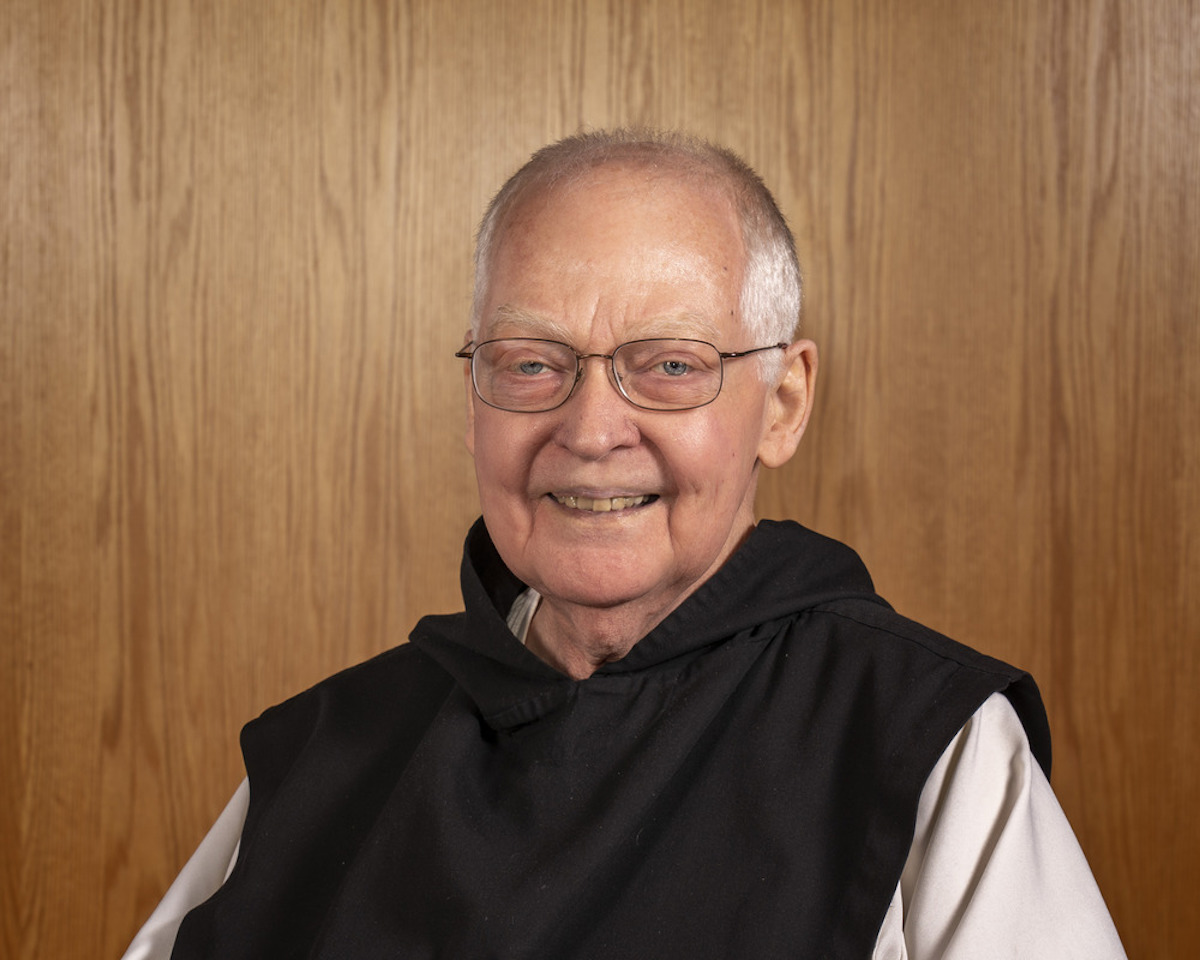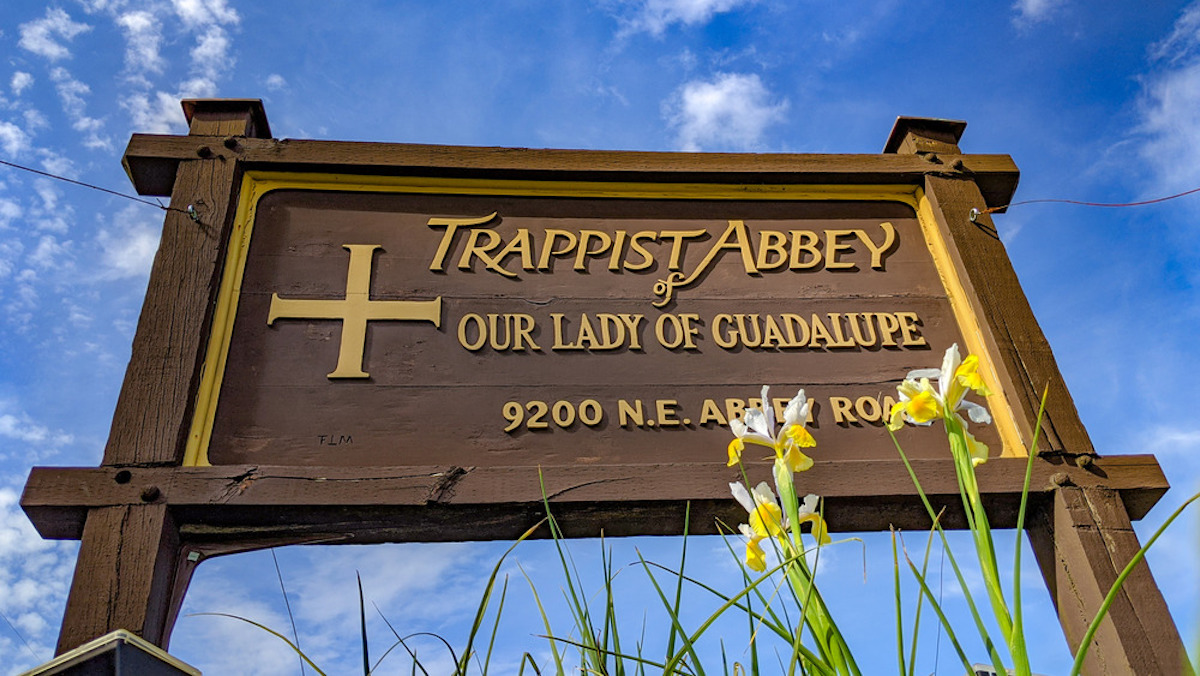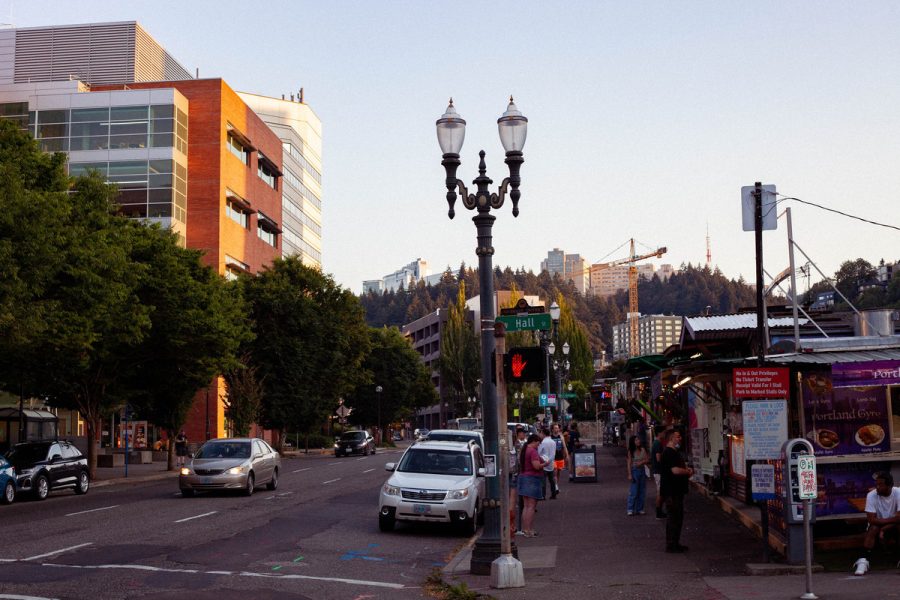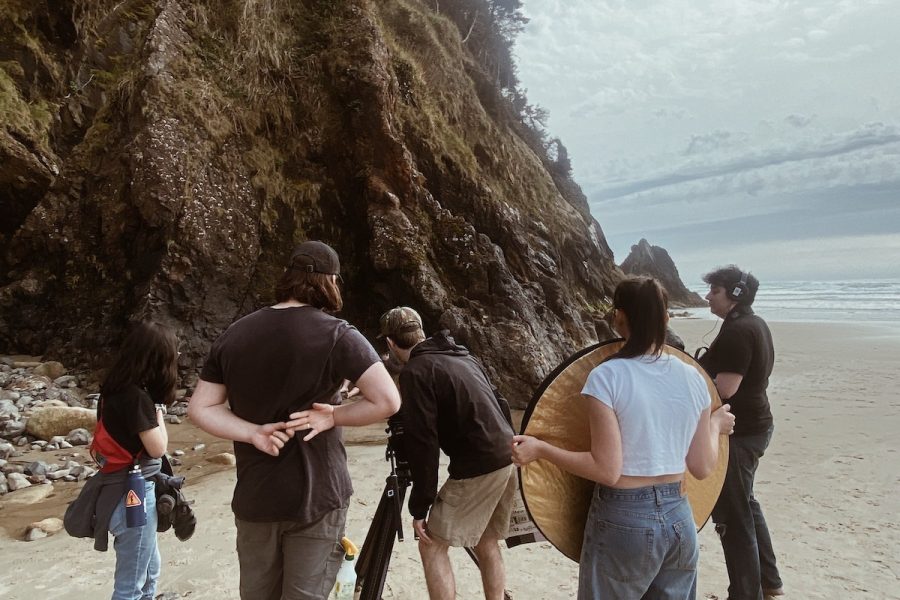If you’ve ever walked the stacks of Portland State’s Branford Price Miller Library, you’ve likely noticed the distinctive hard-cloth bindings on a number of books on the shelves. From academic journals to dissertations, many of the library’s specialty bookbinding needs are performed by a community of Trappist monks from the Our Lady of Guadalupe Trappist Abbey in Carlton, Oregon.
Jill Emery, Collection Development and Management Librarian for the PSU Library, started at PSU in 2011. By then, the Trappists had been working with PSU for a while. “It was definitely very well established when I started here,” Emery said. She explained that the library regularly receives volumes of materials such as periodicals, and having so many loose volumes on the shelf creates difficulties for preservation and patron use. To fix this problem, the library gives these volumes to the abbey bindery. There, the monks bind a collection of paperback journals, for example, into a hardcover volume encompassing several editions. The library also employs the monks to do specialty bookbinding and repair work, such as with theses and dissertations.
When asked if it was odd for a university library to employ a Trappist abbey for their bookbinding services, Emery responded that it was simply a matter of convenience and tradition. “We’ve been using them for decades at this point,” she said. “I think one of the reasons why we do use them is because they’re close to us, and it’s easier to have a relationship and get material moved back and forth.” The next nearest bindery is in Washington, Emery noted.
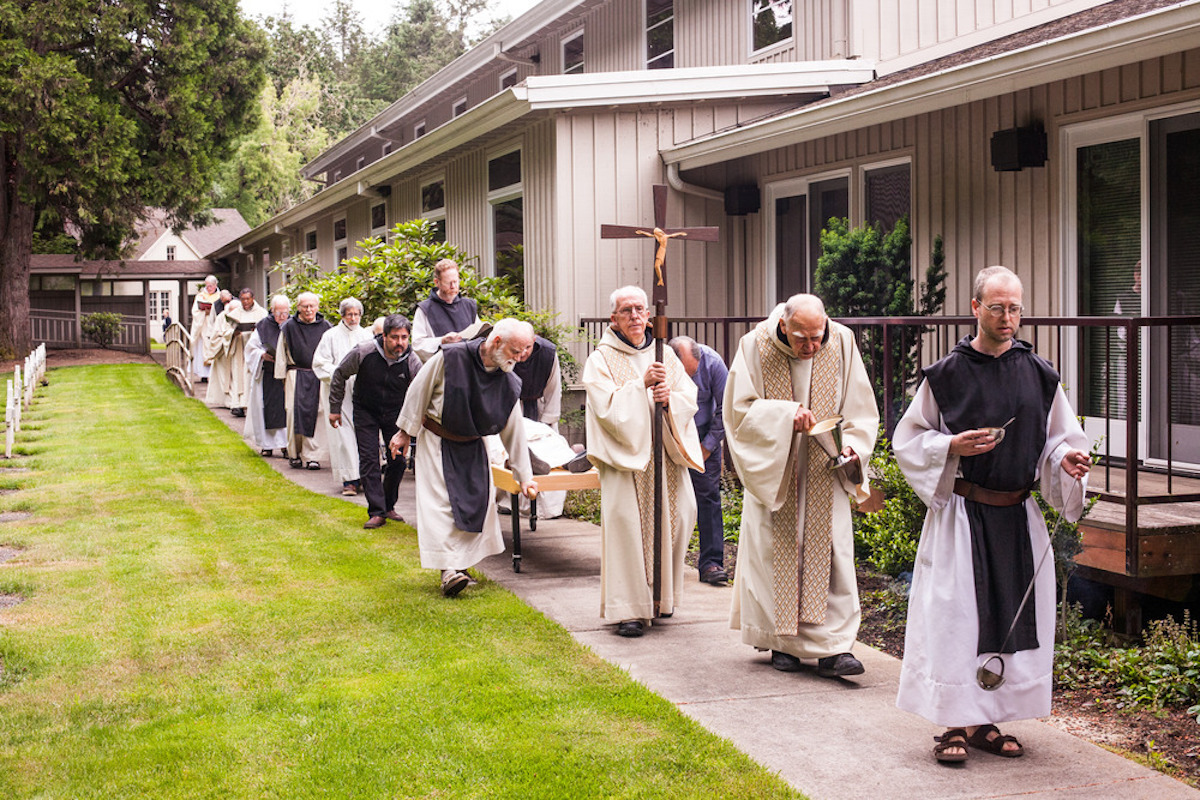
However, the use of print materials has been in decline for years, Emery said, with the COVID-19 pandemic adding to the issue. Many materials have been made increasingly available through online library resources in the form of online journals, e-books or digital images. At the onset of the pandemic, the library halted their bindery work with the abbey altogether, when they dramatically shifted to provide access to online materials. Today, Emery said, the library makes one shipment to the abbey every two months.
“There has been a lot of accommodation and collapsing of that sort of work [bookbinding] throughout the country, just because more and more materials are provided online as opposed to in print, and so there’s less of a need,” Emery said. “Bigger universities like the University of Oregon, they probably do a bit more book repair and that sort of work in house—they probably have the staff for that.” While many materials have moved online, some will remain in print, she said, such as niche literary magazines and books of art. A university library like PSU’s simply doesn’t have the capacity to do their own binding, Emery said, and that work will always need to be done.
Brother Gerald has been a member of Our Lady of Guadalupe Trappist Abbey since the spring of 1974 and currently works with the bindery handling customer service, accounting and order entry. Recounting the history of the abbey, Gerald said the bindery business started shortly after the monastery was settled in Carlton in 1955.
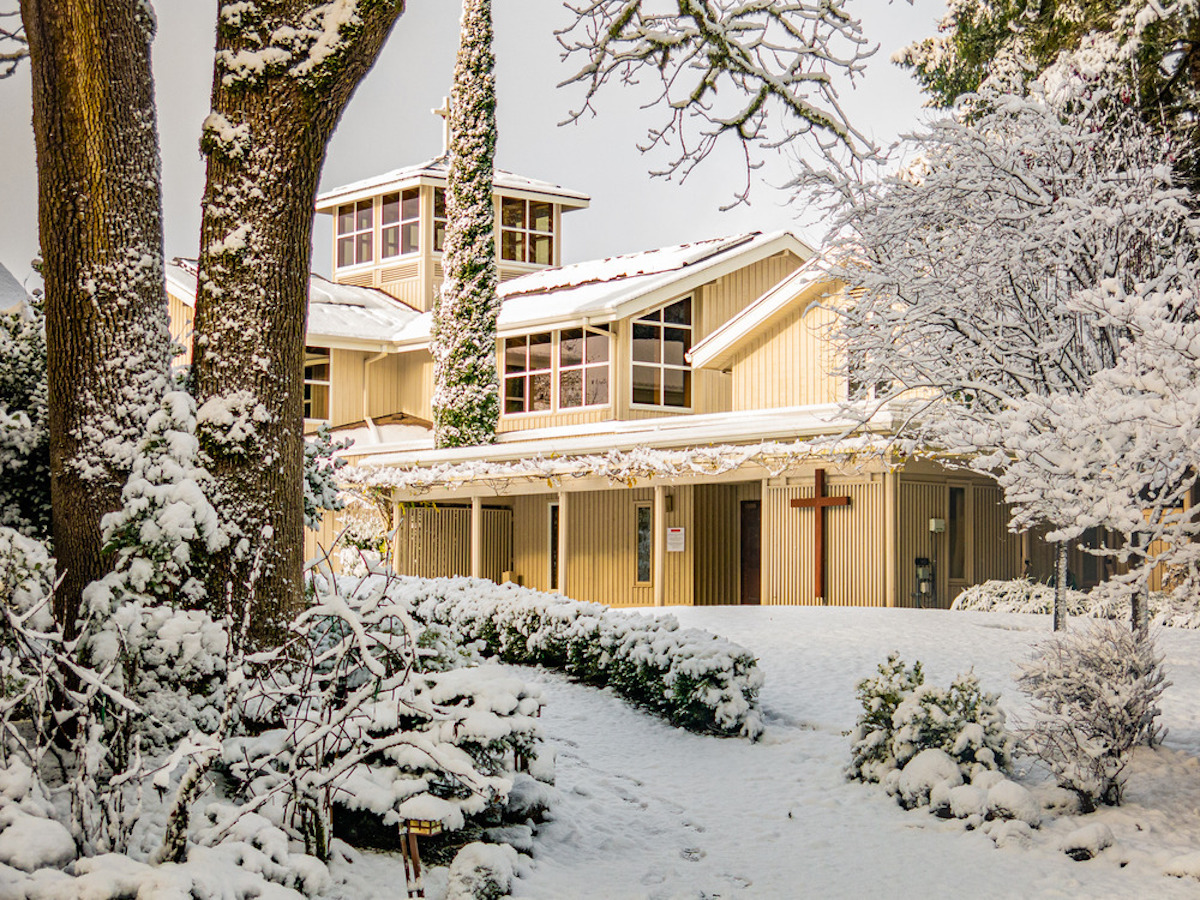
“One of the monks had learned some hand-bookbinding in seminary, and was doing that for our library, and we decided to promote that and dedicated the space for it and started getting some equipment,” Gerald said. “By the middle of the 1960s we were ready to go serious on it, so we bought some bindery equipment and went out looking for… university customers. And we actually picked up the ones we went after because we were local, and I guess they figured they could trust us because we were monks.”
The abbey began its relationship with PSU in the 1960s, and it picked up many of its university clients around the same time. However, what once was a booming business has dried up in recent years as a consequence of “digital migration,” as Gerald described it.
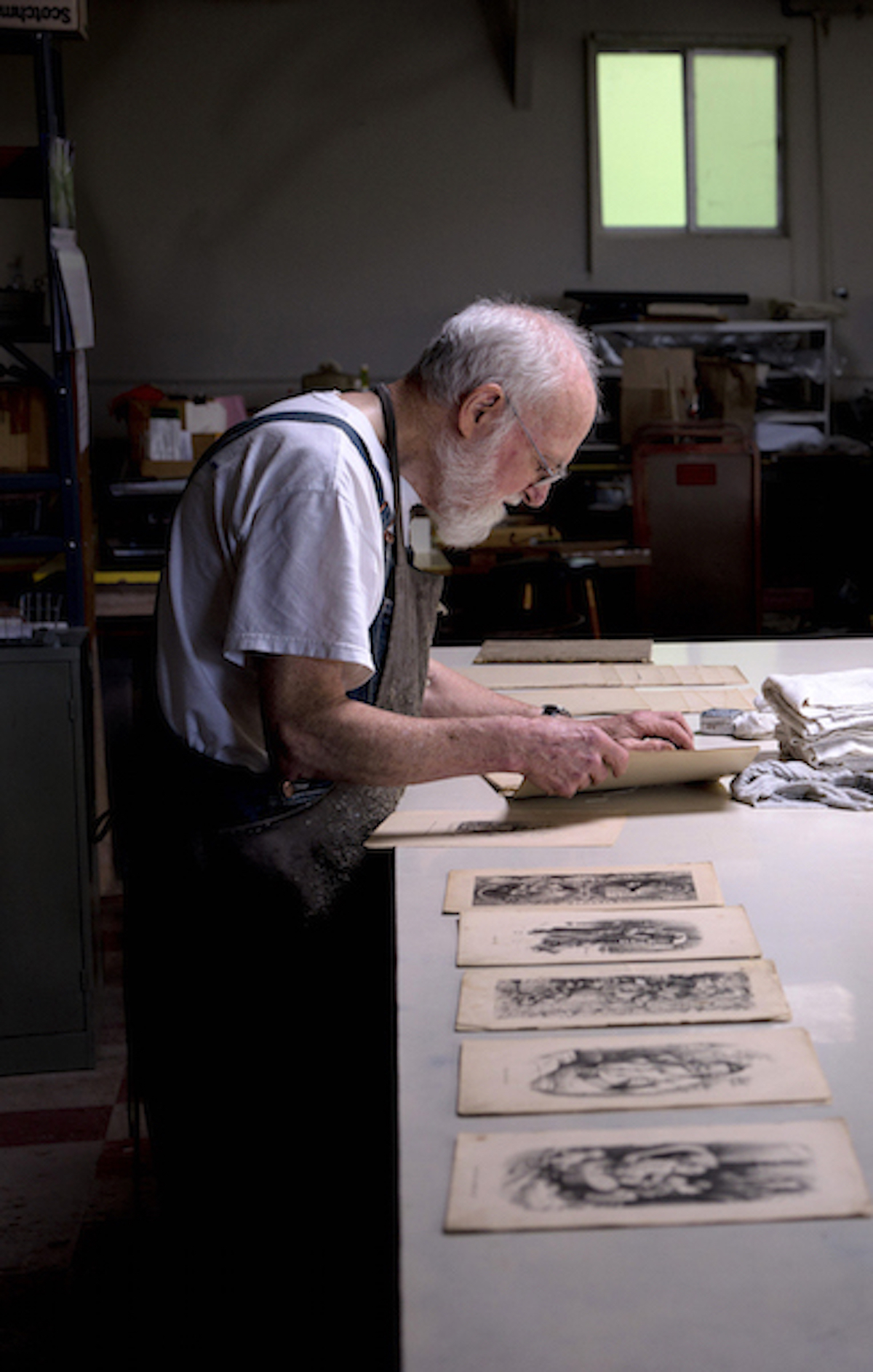
“When I came in 1974, we were picking up and delivering weekly to PSU using book carts,” Gerald said. “We had a full book cart for periodicals and a full book cart for dissertations and monographs for rebinding, every week. So 115 to 200 volumes being bound weekly.”
The move to digital materials has sharply cut back on their work. “That’s really made the bindery pretty much obsolete,” he said. While they still do specialty work, he noted, business is nowhere near what it used to be. “We find very little from PSU now. I get a box, one box, from the Preservation department every other month… so it’s shrunk in a huge way.” Some universities that previously worked with the abbey have stopped binding services altogether, he said.
Gerald struck a note of melancholic nostalgia when describing how the bindery was before, compared to today. “We had probably a dozen monks working in the bindery when I came in 1974, and books were stacked all the way around the bindery, because we were doing such volume,” he said. “But now we’re basically three-and-a-half monks working in the bindery, and not getting any younger.”
